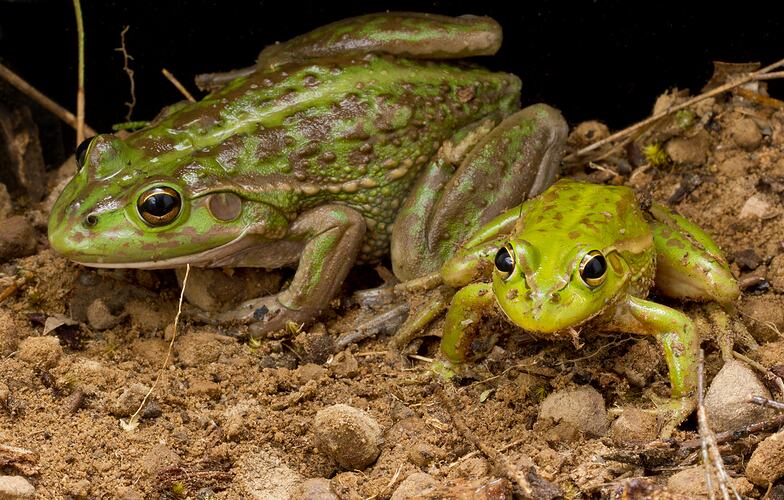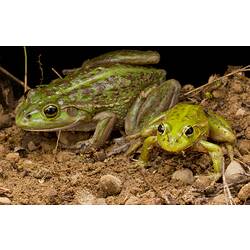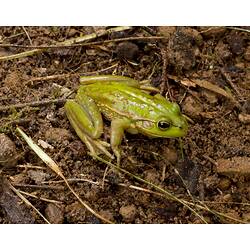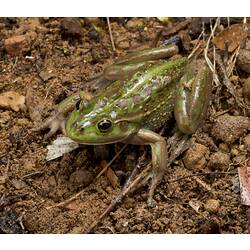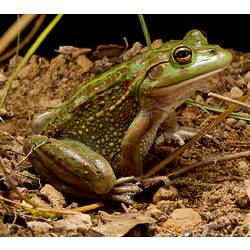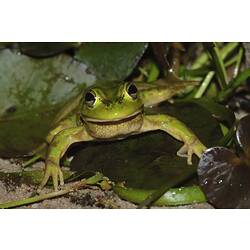General Description
Body bright green with golden-coloured patches on the back, and a pale stripe along the middle of the back. Back covered in warty lumps. Groin and legs turquoise blue. Belly cream coloured and granular. Fingers unwebbed, toes webbed. Pads present, but only slightly wider than fingers and toes. Up to 8.5 cm long. Call a slow and deep, made up of 4-6 parts; "craw, craw, crok, crok".
Biology
Growling Grass Frogs are a semi-aquatic species found in close proximity to slow flowing creeks and water bodies. They eat mostly small invertebrates but also small vertebrates including those of its own species (they are cannibalistic). Individuals are active during the day and night. Males often call from the water amongst floating vegetation. Sadly, this species has suffered severe population declines over the last 50 years.
Distribution
South-eastern Australia, from south-eastern South Australia through to the southern highlands of New South Wales. Also Tasmania.
Habitat
Near still waterbodies in woodland, shrubland and flooded plain areas.
More Information
-
Animal Type
-
Animal SubType
-
Brief Id
large ground-dwelling warty green and golden frog.
-
Colours
Green, Brown, Purple, White
-
Habitats
-
Diet
Insects
-
Endemicity
-
Commercial
No
-
Conservation Statuses
CITES: Not listed, FFG Threatened List: Vulnerable, EPBC Act 1999: Vulnerable, IUCN Red List: Endangered
-
Taxon Name
-
Scientific Author
(Keferstein, 1867)
-
Common Name
Southern Bell Frog
-
Other Names
Growling Grass Frog , Warty Bell Frog , Green And Gold Frog
-
Kingdom
-
Phylum
-
Subphylum
-
Class
-
Subclass
-
Order
-
Family
-
Genus
-
Species Name
raniformis
